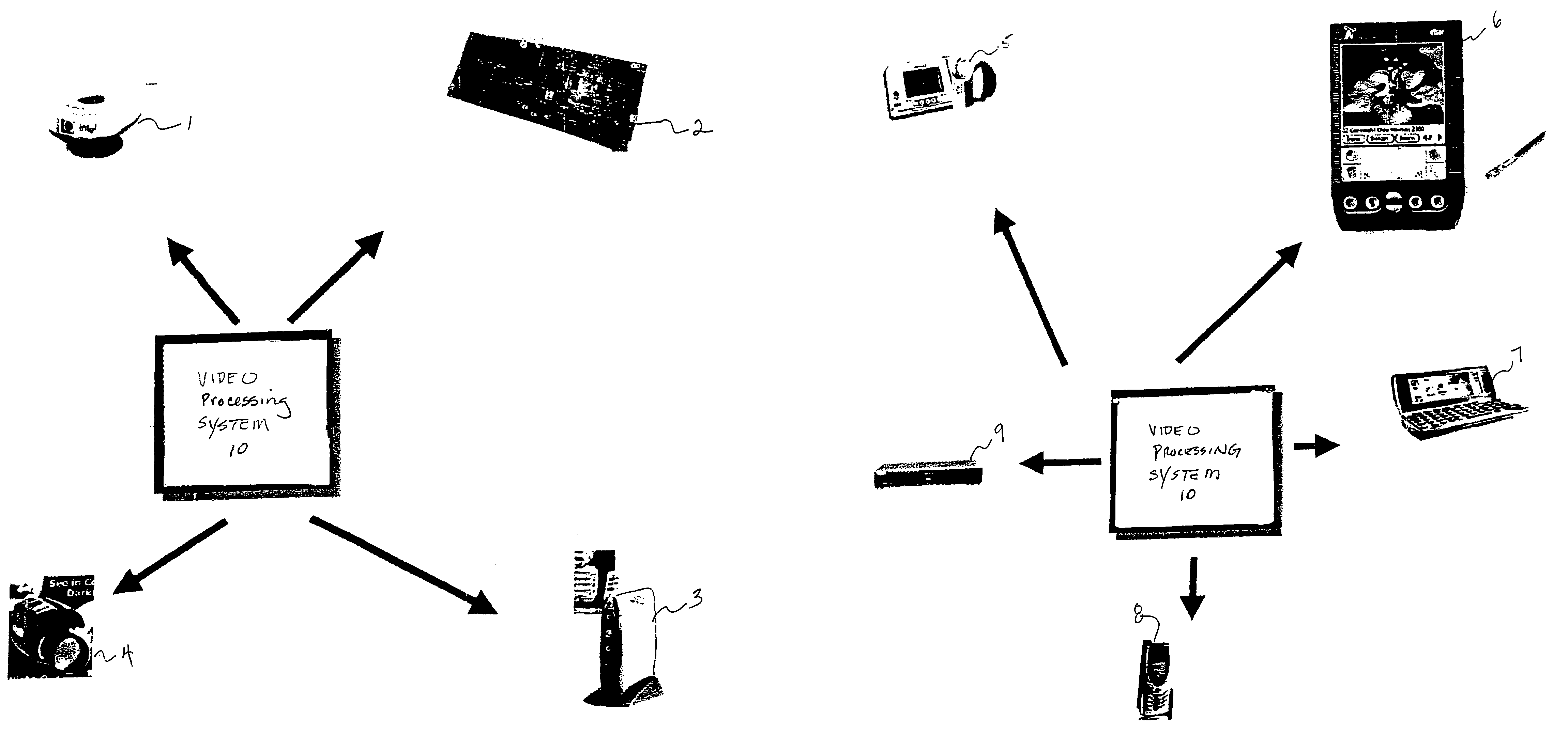Cell array and method of multiresolution motion estimation and compensation
a multi-resolution, multi-resolution technology, applied in the field of video processing, can solve the problems of reducing the resolution quality, the high cost of encoding process computation, and the general unsatisfactory approach to reducing the large number of calculations associated with motion estimation, so as to save overall processing time, improve granularity, and reduce computations.
- Summary
- Abstract
- Description
- Claims
- Application Information
AI Technical Summary
Benefits of technology
Problems solved by technology
Method used
Image
Examples
Embodiment Construction
[0008]The present invention overcomes the deficiencies and limitations of the prior art by providing a system for video compression of frames of pictures (images). According to one aspect of the present invention, a novel system for performing motion estimation and compensation is provided. In order to determine the motion vectors used in motion estimation, one embodiment of the system includes a base platform (back end) having a processor, bus and interrupt controller, memory device, memory controller, and multi-channel controller coupled to a system bus. Digitized video signals originating from a source are received by an audio / visual input interface which is coupled to the system bus. In the embodiment described, the system further includes a front end having a discrete cosine transformer capable of functioning also as an inverse discrete cosine transformer, quantizer capable of functioning as an inverse quantizer, a variable length coding encoder, macroblock SRAM, a stream buffe...
PUM
 Login to View More
Login to View More Abstract
Description
Claims
Application Information
 Login to View More
Login to View More - R&D
- Intellectual Property
- Life Sciences
- Materials
- Tech Scout
- Unparalleled Data Quality
- Higher Quality Content
- 60% Fewer Hallucinations
Browse by: Latest US Patents, China's latest patents, Technical Efficacy Thesaurus, Application Domain, Technology Topic, Popular Technical Reports.
© 2025 PatSnap. All rights reserved.Legal|Privacy policy|Modern Slavery Act Transparency Statement|Sitemap|About US| Contact US: help@patsnap.com



